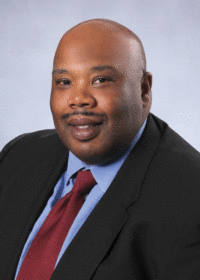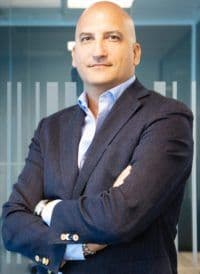When a scientific journal adds a new associate editor, that change means more for readers than just a tweak to the masthead. New associate editors bring new experiences, new perspectives, and new ideas to their publications. Get to know some of ACS’ latest editors and learn what unique gifts they’ll be bringing to their respective […]

Gerrit Boschloo, ACS Applied Energy Materials
My current focus is mostly on perovskite solar cells. When I finished my chemistry undergraduate studies,I was much attracted by the idea of using chemistry for solar energy conversion. I was happy to start graduate studies on dye-sensitized solar cells, just after Brian O’Regan and Michael Grätzel published their 1991 Nature paper. When the perovskite solar cells revolution started in 2012, we joined that field directly.
***
What is your research focus? What initially attracted you to your field?
My current focus is mostly on perovskite solar cells. When I finished my chemistry undergraduate studies, I was much attracted by the idea of using chemistry for solar energy convers
***
What do you hope to bring to your journal?
I will try to promote original and creative ideas in research papers. A large part of the papers that are published to date are scientifically sound, but kind of repetitive.
***
What are the major challenges facing your field today?
The field of perovskite solar cells is overheated, with more publications appearing every day than what you can read. Nevertheless, the scientific and technological progress is very impressive. Stabilty is crucial issue for perovskite solar cells and any other PV technology that wants to compete with silicon, which sets the standard.
***
What do you think is the most interesting and/or important unsolved problem in your field?
The effects of ion conduction in perovskite solar cells are very interesting. Could it be beneficial for solar cell performance, or will it eventually lead to degradation processes?
***
Do you have a recent paper in an ACS journal that you’d like to highlight?
There is still room for novel findings and improvements in dye-sensitized solar cells. In recent work by Yan Hao et al., we introduced electron donors to the redox electrolyte, which significantly improved dye regeneration efficiencies under working conditions, and led to much improved performance.
Efficient Dye-Sensitized Solar Cells with Voltages Exceeding 1 V through Exploring Tris(4-alkoxyphenyl)amine Mediators in Combination with the Tris(bipyridine) Cobalt Redox System
ACS Energy Lett., 2018, 3, 8, 1929-1937
DOI: 10.1021/acsenergylett.8b00872
***
Heather Clark, ACS Sensors

My group is currently working at the interface of chemistry and biology to develop and apply novel nanoscale probes for biological measurements. In order to fulfill my goal of chemical imaging deep in the body (brain, central nervous system, circulatory system) we are approaching the problem through two directions. First, we are working with fluorescence-based sensors in cellular and tissue environments to understand the capabilities of the sensors for single-cell signaling. Second, we are tailoring our sensors to be compatible with advanced imaging techniques (photoacoustics, MRI) to image deep in the body. Ultimately, we will use the probes to image specific chemical processes and biomarkers in the body, in real-time. I was attracted to the field because I was fascinated by the thought of a world of biology that was invisible to the eye. The signaling inside and between cells and in the body are rapid and continuous, and every new tool for imaging these processes could potentially unlock a new understanding of biology or medicine.
***
What do you hope to bring to your journal?
The EIC and Associate Editors have already done a fantastic job of defining and upholding high standards of excellence for ACS Sensors. It is my goal to maintain these ideals, particularly highlighting innovation in the area of in vivo sensors.
***
What are the major challenges facing your field today?
Perhaps due to funding challenges, the impetus to translate new sensor technology into the hands of others is often overlooked. I believe the ultimate sign of success for any sensor would be for the scientific community to use it for new discovery. There are great examples where this has been the case, such as optogenetic probes, and we should all be inspired to push our technologies to that level. Exciting publications in ACS Sensors should be the beginning of the story, not the end!
***
Do you have a recent paper in an ACS journal that you’d like to highlight?
DNA-Based Photoacoustic Nanosensor for Interferon Gamma Detection
ACS Sens., 2019, 4, 5, 1313-1322
DOI: 10.1021/acssensors.9b00209
We recently published a nanosensor that detects cytokines using photoacoustics for detection. The novelty of the work was the signal change based on the stacking of phthalocyanine dyes when a cytokine was bound, causing the sensor arms to close. The work was a result of a multi-group collaboration, between organic chemists, sensor developers, and photoacoustic experts.
***
Anything else you’d like readers to know about you?
I am an avid bread baker and I enjoy non-competitive sprint triathlons, so spend my free time baking, running, swimming, and biking.
***
Squire Booker, Biochemistry

Research in the Booker Lab focuses on understanding how Nature harnesses the power of radicals to effect kinetically challenging enzymatic reactions, many of which are critical to proper cellular functioning. Much of the lab’s work has centered around the enzymatic use of S-adenosylmethionine and iron-sulfur clusters to generate 5’-deoxyadenosyl 5’-radicals, used predominantly by members of the radical S-adenosylmethionine (SAM) superfamily. We were drawn to this area of research because the chemistry that radical SAM enzymes catalyze is quite novel, and in many cases, unexpected and astounding, which has lead us to a number of surprising findings.
***
What do you hope to bring to your journal?
I hope to bring excitement and enthusiasm about biochemistry that is driven by an earnest appreciation for rigorous and fundamental science that stands the test of time.
***
What are the major challenges facing your field today?
The major challenges facing my field are similar to those facing other fields in the life sciences. I think we need to teach students better the difference between hype and robust scientific investigation. In addition, the scramble to publish in trendy journals is affecting rigor and reproducibility. People care more about where they publish and how much they publish rather than whether their work is robust.
***
What do you think is the most interesting and/or important unsolved problem in your field?
I think there are way too many to single out any individual unsolved problem. Until we’ve conquered all major diseases, we have plenty of work to do. On a personal note, I like the idea of trying to annotate the huge number of genes of unknown function across all organisms. I particularly like to look at radical SAM enzymes, because they often catalyze reactions that are mechanistically and physiologically exciting. I think they will become even more important as we gain a deeper appreciation for the microbiome.
***
Do you have a recent paper in an ACS journal that you’d like to highlight?
Enhanced Solubilization of Class B Radical S-Adenosylmethionine Methylases by Improved Cobalamin Uptake in Escherichia coli
Biochemistry, 2018, 57, 9, 1475-1490
DOI: 10.1021/acs.biochem.7b01205
***
Igor Tetko, Chemical Research in Toxicology

Use of computational methods to predict physico-chemical and biological activities of molecules. Indeed, this is really a fascinating problem – to draw a molecule as a 2D graph and use this graph to predict physico-chemical, biological and toxicological properties of even not yet existing structures. Some of such predictions can be more easily done with quantum chemistry methods while others, in particular more complex ones, can be predicted using chemoinformatics approaches.
***
What do you hope to bring to your journal?
Expertise on the use of computational methods and in particular chemoinformatics tools to predict biological endpoints and toxicity of chemical compounds. Expertise in new methods of data analysis, such as deep learning neural networks, transfer learning, multitask learning, convolutional neural networks, which are getting multiple applications in chemistry and toxicology.
***
What are the major challenges facing your field today?
A need to provide confident and accurate estimations of predictions of target endpoints by integrating various heterogeneous data sources (“Big Data”). A need to provide a better mechanistic interpretation of models in order to understand “why” model provided a given prediction and what are the critical factors, which underline it. Such interpretations are very important to understand how the molecule can be modified, e.g., to remove its toxicity without affecting its other properties. Also, I think that reproducibility of computational models is very important. That is why the developed models and/or data used to develop them should be made available to the readers.\
***
Do you have a recent paper in an ACS journal that you’d like to highlight?
Comparative Study of Multitask Toxicity Modeling on a Broad Chemical Space
J. Chem. Inf. Model., 2019, 59, 3, 1062-1072
DOI: 10.1021/acs.jcim.8b00685
This study shows that multitask learning, that is modeling of several properties simultaneously, improves toxicity prediction in comparison to models developed for each single endpoint. This is an important result towards the use of heterogeneous data, some of which may not be sufficiently large and accurate to develop a model for single individual endpoints. The developed model is available on-line and can be used by chemists to assess toxicity of their compounds. The interpretation of the model and accurate estimation of a reliability of its predictions for each endpoint still remains an important challenge.
***
Marco De Vivo, Journal of Chemical Theory and Computation

From the start of my career, I have been fascinated by the structure, dynamics, and catalysis of chemical systems. My laboratory’s main goal is to advance our understanding of the general principles that control molecular recognition and catalysis, and to use this information to rationally design intelligent nanosystems and inhibitors as drugs, particularly to fight cancer and neurodegeneration. I am particularly interested in enzymes that process DNA and RNA. Our group explores how these molecular entities recognize each other and operate together. This guides our efforts to rationally modulate their interactions, thus creating new avenues for computer-aided drug design. I am also really excited about the potential of functionalized nanoparticles for applications such as chemosensing and nanocatalysis. Our group works with experimentalists to develop tools for molecular simulations in order to rationally design functionalized nanosystems as intelligent biosensors.
***
What do you hope to bring to your journal?
I am excited to continue endorsing and promoting the Journal of Chemical Theory and Computation (JCTC) as a platform for innovative work in the broad field of computational chemistry. From method development to innovative applications of computational approaches, and from proteins to DNA/RNA and artificial new materials, JCTC is the reference journal and a great forum for the computational chemistry community. As an Associate Editor, I am looking forward to making computational advances promptly available to JCTC readers.
***
What are the major challenges facing your field today?
Nowadays, experimental data offers computational chemists the opportunity to build and investigate very complex model systems. Think of large structural assemblies that may include proteins, metal ions, nucleic acids, and even artificial particles. But the ever-increasing complexity of these model systems and their molecular interactions means that we need to develop new parameters, novel sophisticated computational tools, and advanced computational methods and approaches. In addition, when running calculations, we have to strike an appropriate balance between accuracy and sampling, which is a constant challenge of computational modeling.
***
Do you have a recent paper in an ACS journal that you’d like to highlight?
NanoModeler: A Webserver for Molecular Simulations and Engineering of Nanoparticles
J. Chem. Theory Comput., 2019, 15, 3, 2022-2032
DOI: 10.1021/acs.jctc.8b01304
This work presents NanoModeler, a web server and platform that we created for the scientific community. It can be used to automate and standardize the construction and parametrization of realistic models for atomistic simulations of gold nanoparticles and nanoclusters. We believe that NanoModeler will accelerate developments in the field of computational nanodesign and simulation to engineer functionalized nanoparticles for biotechnological applications.
***
Donald Wink, Journal of Chemical Education
Since I have worked on the development of curricula and materials, the training of teachers, and on research about these settings, I hope I bring an ability to see how practical questions and theoretical perspectives are important in reporting the most current work in the field.
***
What are the major challenges facing your field today?
There is a need for ongoing engagement between empirical studies about learning and teaching and their application to authentic settings. This is why innovation in teaching methods should be accompanied by rigorous quantitative and qualitative research–and why research should be alert to important new areas of practice. And, as innovation and research are disseminated, it is important to examine how they shift in new settings, especially with diverse audiences.
***
What do you think is the most interesting and/or important unsolved problem in your field?
One of the fascinating aspects of learning (and teaching) is that, in many ways, it is only important at the level of the individual. As a result, we are confronted with the challenge of figuring out “what works” in a way that identifies broad, reproducible trends and also responds to the authentic diversity of teaching and learning settings.
***
Do you have a recent paper in an ACS journal that you’d like to highlight?
I am very proud of the opportunities I have had to work in a collaborative setting with other investigators. A recent example of this is the project led by my colleague Ginevra Clark:
Relating Chemistry to Healthcare and MORE: Implementation of MORE in a Survey Organic and Biochemistry Course for Prehealth Students
J. Chem. Educ., 2018, 9, 5, 137-46
DOI: doi.org/10.1021/acs.jchemed.7b00272
***
